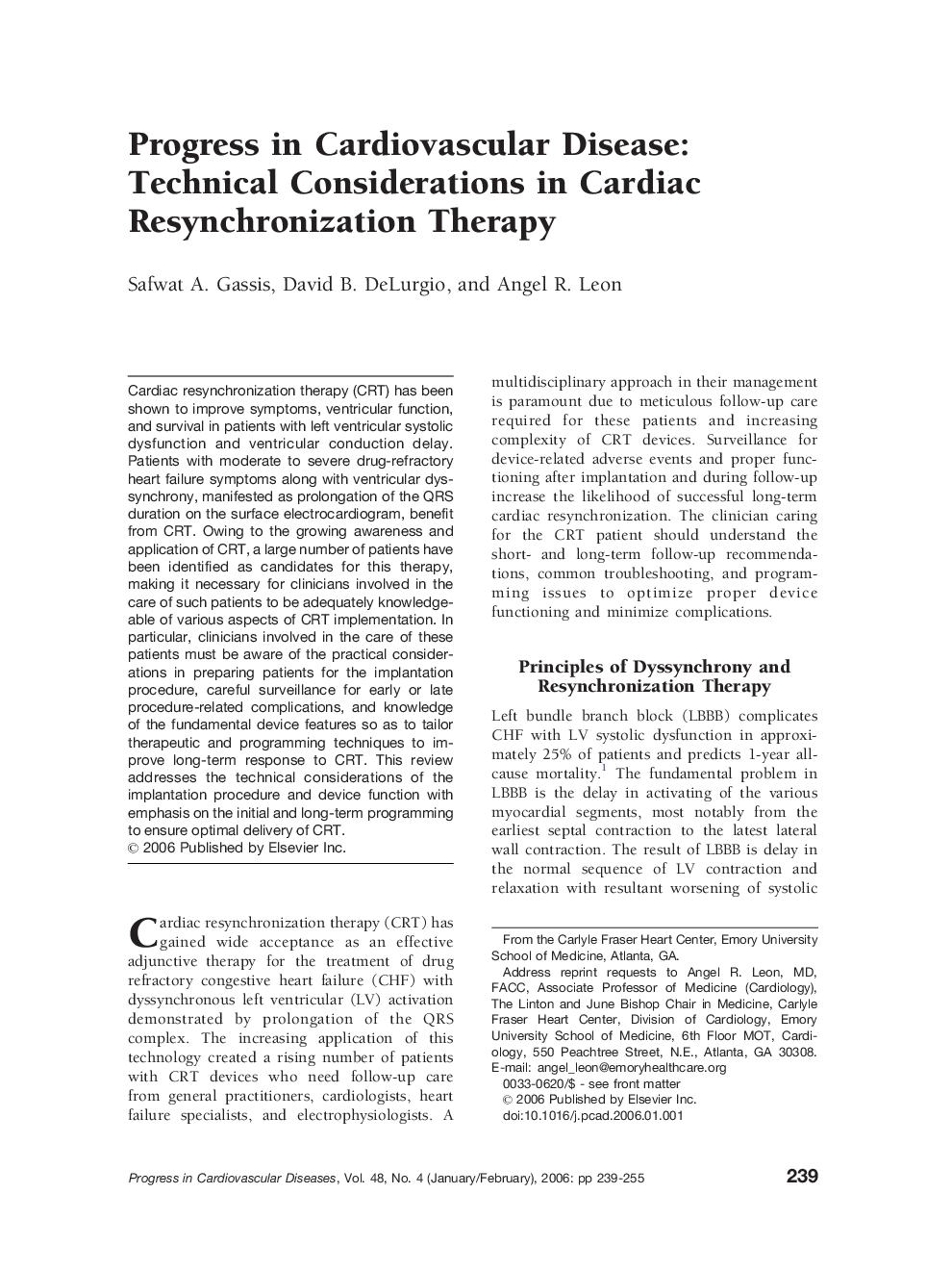| Article ID | Journal | Published Year | Pages | File Type |
|---|---|---|---|---|
| 3007025 | Progress in Cardiovascular Diseases | 2006 | 17 Pages |
Abstract
Cardiac resynchronization therapy (CRT) has been shown to improve symptoms, ventricular function, and survival in patients with left ventricular systolic dysfunction and ventricular conduction delay. Patients with moderate to severe drug-refractory heart failure symptoms along with ventricular dyssynchrony, manifested as prolongation of the QRS duration on the surface electrocardiogram, benefit from CRT. Owing to the growing awareness and application of CRT, a large number of patients have been identified as candidates for this therapy, making it necessary for clinicians involved in the care of such patients to be adequately knowledgeable of various aspects of CRT implementation. In particular, clinicians involved in the care of these patients must be aware of the practical considerations in preparing patients for the implantation procedure, careful surveillance for early or late procedure-related complications, and knowledge of the fundamental device features so as to tailor therapeutic and programming techniques to improve long-term response to CRT. This review addresses the technical considerations of the implantation procedure and device function with emphasis on the initial and long-term programming to ensure optimal delivery of CRT.
Related Topics
Health Sciences
Medicine and Dentistry
Cardiology and Cardiovascular Medicine
Authors
Safwat A. Gassis, David B. DeLurgio, Angel R. Leon,
